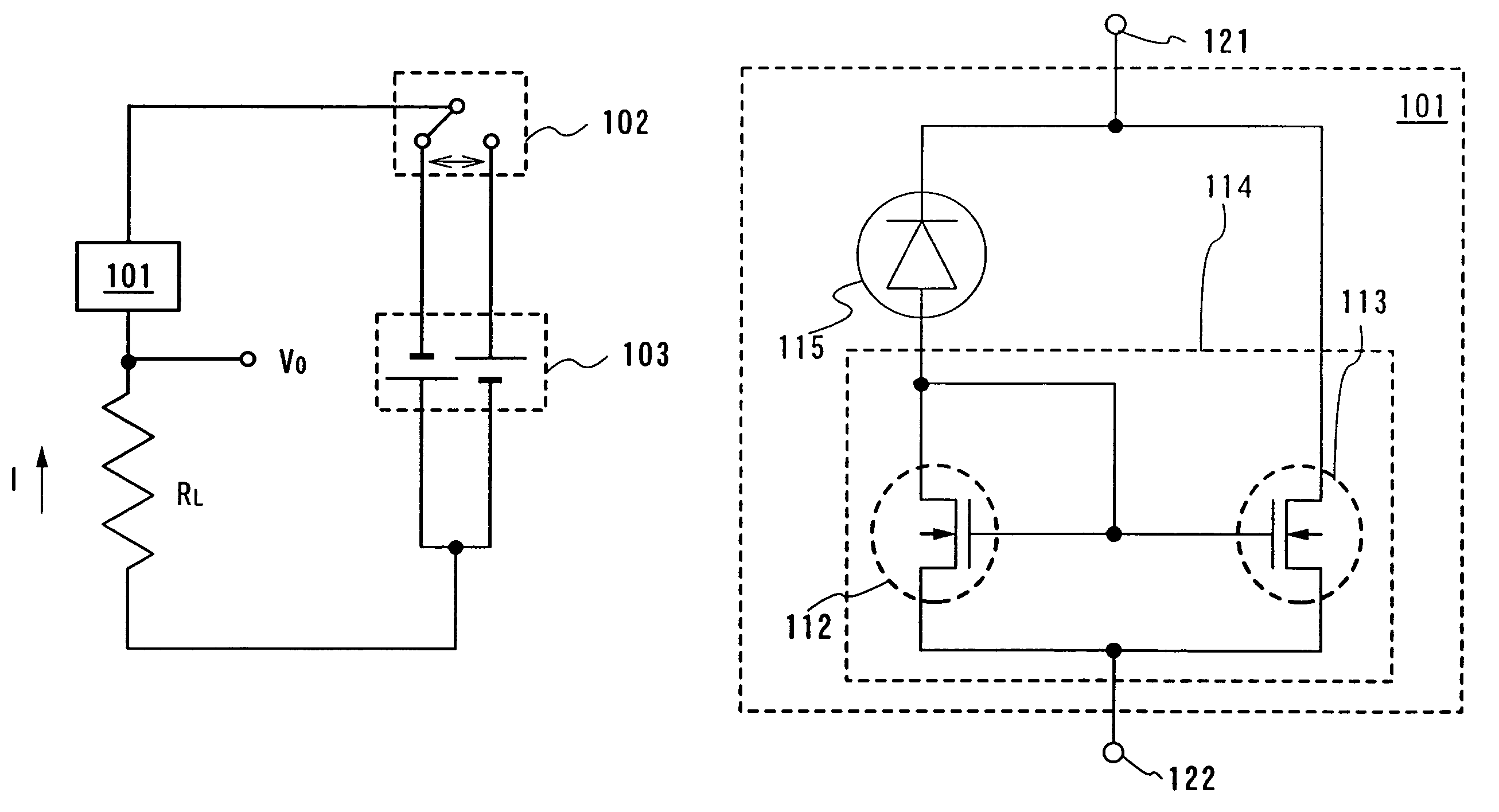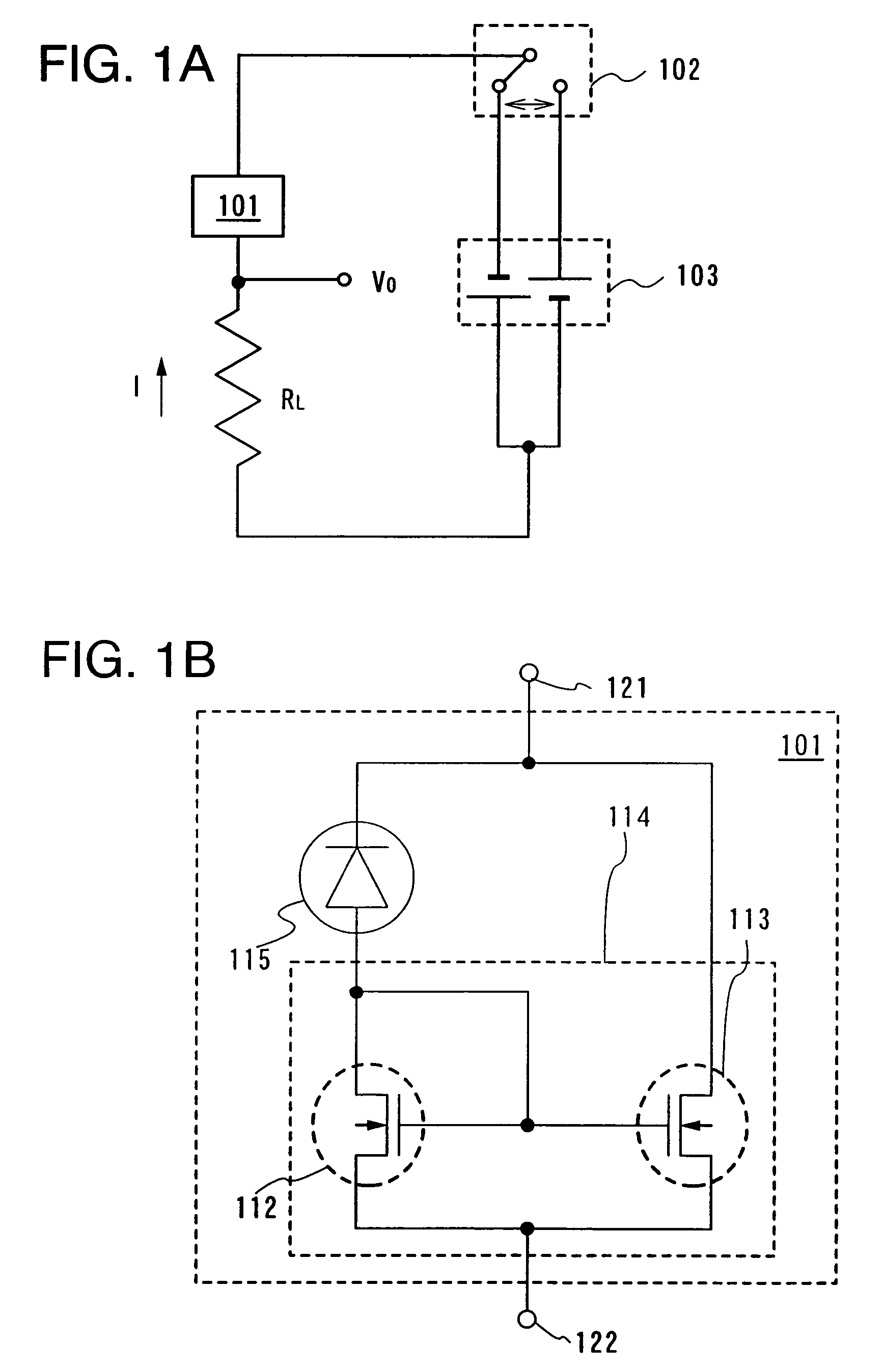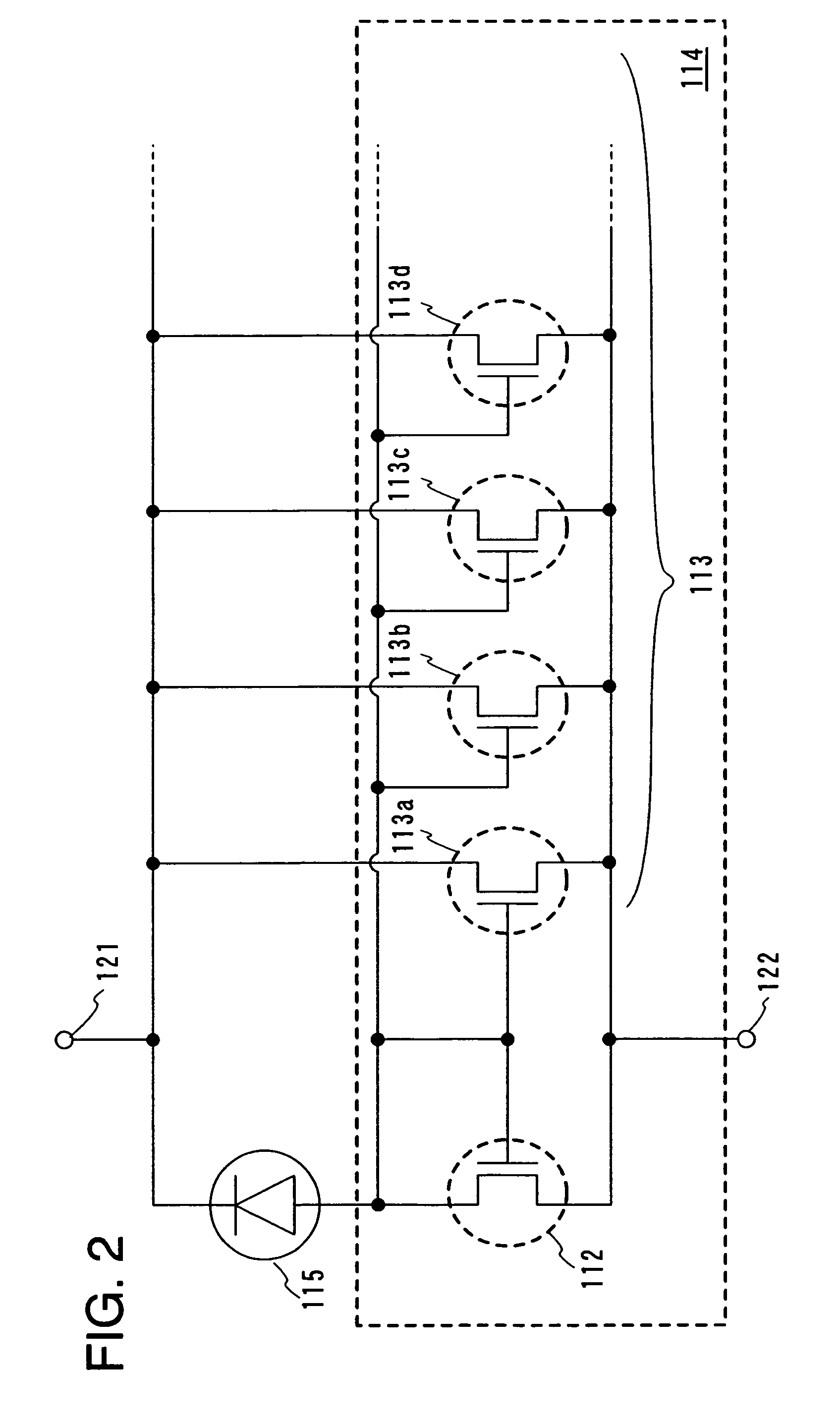Photoelectric conversion device and manufacturing method thereof
a technology of conversion device and photoelectric field, which is applied in the direction of electric pulse generator, optical radiation measurement, television system scanning details, etc., can solve the problems of reducing the voltage used for one gray-scale, expanding the range of output current, etc., and achieves the effect of wide range of light intensity
- Summary
- Abstract
- Description
- Claims
- Application Information
AI Technical Summary
Benefits of technology
Problems solved by technology
Method used
Image
Examples
embodiment 1
[0081]This embodiment will be described with reference to FIG. 19, FIGS. 20A and 20B, and FIG. 22.
[0082]In FIG. 19 and FIGS. 20A and 20B, illuminance dependence of an output current in a photoelectric conversion device manufactured by the present invention is shown.
[0083]In FIG. 19, ELC denotes illuminance dependence of an output current in a photoelectric conversion device having a current mirror circuit by a TFT in which an island-shaped semiconductor region is crystallized by an excimer laser. Also, CW denotes illuminance dependence of an output current in a photoelectric conversion device in which a current mirror circuit is formed by a TFT in which an island-shaped semiconductor region is crystallized by a continuous wave laser. In FIGS. 20A and 20B, ELC and CW which are separately plotted are shown. In addition, a forward direction and an opposite direction denote a direction of bias.
[0084]A difference in illuminance dependence of an output current between the TFT having an is...
embodiment 2
[0088]This embodiment will be described with reference to FIGS. 4A and 4B, FIGS. 5A to 5D, FIGS. 6A to 6C, and FIGS. 7A to 7C. Note that the same portions as those described in Best Mode for Carrying Out the Invention are denoted by the same reference numerals.
[0089]First, an element is formed over a substrate (a first substrate 310). Here, AN 100 which is one of glass substrates is used as the substrate 310.
[0090]Subsequently, a silicon oxide film containing nitrogen (with a thickness of 100 nm) which becomes a base insulating film 312 is formed by a plasma CVD method, and a semiconductor film, for example, an amorphous silicon film containing hydrogen (with a thickness of 54 nm) is formed to be stacked thereover without being exposed to the air. Also, the base insulating film 312 may be a stacked layer using a silicon oxide film, a silicon nitride film and a silicon oxide film containing nitrogen. For example, as the base insulating film 312, a film in which a silicon nitride film...
embodiment 3
[0135]In this embodiment, an example in which an amplifier circuit is formed from a p-channel TFT will be described with reference to FIG. 3 and FIGS. 8A and 8B. Note that the same portions as those in Embodiment Mode and Embodiment 2 are denoted by the same reference numerals, and the amplifier circuit may be formed on the basis of the manufacturing process described in Embodiment Mode and Embodiment 2.
[0136]In a case where an amplifier circuit, for example, a current mirror circuit 203 is formed from p-channel TFTs 201 and 202, a p-type impurity, for example, boron (B) may be substituted for the impurity imparting one conductivity type to the island-shaped semiconductor region in Embodiment Mode and Embodiment 2.
[0137]A view of an equivalent circuit of a light detective portion of this embodiment in which the current mirror circuit 203 is formed from the p-channel TFTs 201 and 202 is shown in FIG. 3, and a cross-sectional view thereof is shown in FIGS. 8A and 8B. Note that FIG. 8B...
PUM
 Login to View More
Login to View More Abstract
Description
Claims
Application Information
 Login to View More
Login to View More - R&D
- Intellectual Property
- Life Sciences
- Materials
- Tech Scout
- Unparalleled Data Quality
- Higher Quality Content
- 60% Fewer Hallucinations
Browse by: Latest US Patents, China's latest patents, Technical Efficacy Thesaurus, Application Domain, Technology Topic, Popular Technical Reports.
© 2025 PatSnap. All rights reserved.Legal|Privacy policy|Modern Slavery Act Transparency Statement|Sitemap|About US| Contact US: help@patsnap.com



